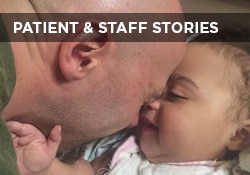This website uses cookies so that we can provide you with the best user experience possible. Cookie information is stored in your browser and performs functions such as recognising you when you return to our website and helping our team to understand which sections of the website you find most interesting and useful.

Susan E. Mazer, Ph.D. Blog
Thoughts and ideas on healthcare
Hi, and welcome to my blog! I'm Susan E. Mazer -- a knowledge expert and thought leader on how the environment of care impacts the patient experience. Topics I write about include safety, satisfaction, hospital noise, nursing, care at the bedside, and much more.
HCAHPS Scores: Mind the Gap Between the Survey and the Answers
August 8, 2014
 In thinking about the history of regulatory accountability, HCAHPS has no precedent. As a measurement tool, it has many gaps, including a gap between intention and outcomes and a gap between the culture of the hospital and the culture of the patient.
In thinking about the history of regulatory accountability, HCAHPS has no precedent. As a measurement tool, it has many gaps, including a gap between intention and outcomes and a gap between the culture of the hospital and the culture of the patient.
There are also gaps between what the HCAHPS questions ask, what they really want to know, and what patients answer. The biggest gap, though, is between the survey and the interpretation of the answers.
In a recent newsletter, patient experience expert Wendy Leebov, Ed.D., shares a conversation with her sister about her recent hospitalization:
I ask her, “How are people on the care team treating you?” And she says, “Fine, I guess.” I ask her to elaborate. What does, “Fine, I guess” mean? And she says, “Every time I go home, I get these surveys, and they ask me how often people do different things. And I give good scores, because people do those things often. But I feel so alone—anonymous, and no one seems to get what I’m going through. And they don’t ask about that on the surveys.”
Dr. Leebov goes on to describe the same gap that I am describing here. In fact, she talks about HCAHPS scores going up and patient experiences not only not improving, but the persistant problems are invisible to the organization and caregivers.
Some compare HCAHPS to patient satisfaction surveys, but those are informational and if there are any consequences for low scores, they are internal to the organization. HCAHPS scores, on the other hand, are part of a national effort in the U.S. for transparency and public awareness of the performance of healthcare organizations beyond mortality.
It places the power of grading in the voice and hands of patients.
I have been critical of the questions included in the now 31-question survey because none of the questions inform actionable strategies that are clearly related to the patient responses. We just do not know what would generate an answer — except the obvious.
But the obvious still may not be the whole story.
So, how do we evaluate the quality of the patient experience, the family experience, and the staff experience? We could set the experience up as being blatantly evidenced by a series of symptoms. For example:
- Family members walk to nurses’ station with concerns more than twice an hour
- Patient pushes call button 4-20 times a day
- Patient is agitated upon the nurse entering the room
- Physician complains that the patient and family members are difficult to deal with
- Patient demands to see the physician
But what if this was the scenario:
- Family member delivers box of candy to nurses’ station and thanks the nurses regularly
- Patient is relatively quiet and is not in need of anything relative to his or her care
- Patient is happy to see the nurse and thanks nurse when entering and leaving the room.
- Physician is in good mood and finds patient and family members to be engaged and active in understanding the patient’s condition
- Family members, regardless of the seriousness of the patient’s condition, treat the staff with deference to the complexity of the task of caring and gratitude for doing what they can
I suggest you make your own list of symptoms of a good vs. a bad experience.
Then, look at your HCAHPS scores. Is there a mismatch? Does it matter if the HCAHPS questions do not address what you identified?
There clearly is a correlation between the actual lived patient experience and your honest observation and HCAHPS, even if there is no direct question. This is because the patient experience is a whole and complex experience that can hardly be detailed in 31 multiple-choice questions.
Taking responsibility for what you observe and do is much more critical than “teaching to the test.”
The answers are in front of us every day, in every way, with every patient, with every interaction. If your HCAHPS scores do not match your patients’ experiences, find out why.
P.S. If you like this post, please do me a favor and share on LinkedIn, Twitter, Facebook, etc. Also to get automatic notices when a new post is published, subscribe (upper right). No spam – just great content. Thanks!










